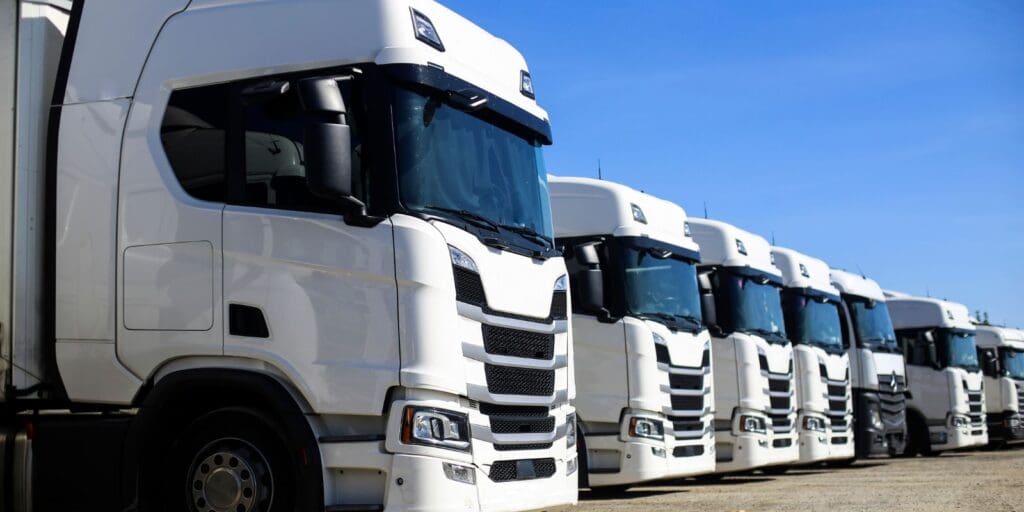In the ever-evolving landscape of the UK’s transport and logistics sector, technology has become a pivotal force, driving unprecedented changes and efficiencies. The world of Heavy Goods Vehicles (HGVs) and trucking is at the forefront of this revolution, witnessing innovations that not only enhance operational efficiency but also significantly improve safety and environmental sustainability. From advanced satellite navigation systems to sophisticated driver aids and automated maintenance tools, the impact of technology on modern trucking is profound and multifaceted.
Modern Sat Nav Systems
Satellite navigation systems have come a long way from merely providing directions. Today’s advanced systems are tailored specifically for the unique needs of the trucking industry, incorporating real-time traffic updates, route optimization to avoid low bridges or weight-restricted roads, and even information on available parking spaces. These intelligent systems can calculate the most efficient routes, taking into account the vehicle’s size, weight, and cargo type, thereby saving time, fuel, and reducing the overall carbon footprint of operations.
Driver Vehicle Aids
The advent of driver aids marks a significant leap towards improving road safety for HGVs. These include lane departure warning systems, automatic emergency braking, and blind-spot information systems, all designed to augment the driver’s awareness and reaction times. Adaptive cruise control, which adjusts the vehicle’s speed to maintain a safe distance from the vehicle ahead, further exemplifies how technology can mitigate the risk of accidents. Moreover, fatigue monitoring systems that detect signs of driver tiredness and suggest rest breaks are becoming increasingly common, underlining the industry’s commitment to safety.
Streamlining Maintenance
Technology’s role extends beyond navigation and safety, reaching into the very heart of vehicle maintenance. Easy sheet systems such as those used on waste management vehicles and skip wagons exemplify this trend, offering a simple yet effective solution for protecting cargo and facilitating easy access for maintenance checks. However, the innovation doesn’t stop there. Telematics and onboard diagnostics systems can now monitor a vehicle’s health in real-time, predicting maintenance needs before they become critical issues. This predictive maintenance capability not only extends the lifespan of the vehicle but also ensures that it operates at peak efficiency, reducing unexpected downtimes that can disrupt logistics operations.
Environmental Innovations
Environmental sustainability is a pressing concern, and technology is playing a crucial role in addressing it within the trucking industry. Electric HGVs are on the rise, promising a future of zero-emission trucking. While the adoption is still in its early stages, the potential for reducing the transport sector’s carbon footprint is immense. Hybrid technologies and improvements in fuel efficiency for traditional diesel trucks also contribute to this green transition, showcasing the industry’s holistic approach to environmental responsibility.
The Digital Ecosystem
The integration of HGVs into the broader digital ecosystem is perhaps one of the most transformative trends. Through IoT (Internet of Things) technology, trucks are no longer isolated entities but are connected to a network that includes logistics operators, maintenance services, and even the end customer. This connectivity enables unprecedented levels of coordination, real-time tracking, and data-driven decision-making, paving the way for a more transparent, efficient, and responsive supply chain.
Looking Ahead to Autonomous Trucks
While still in the developmental phase, autonomous trucking represents the horizon of technological innovation in the sector. With the promise of reducing the strain on drivers, enhancing safety, and further optimising logistics operations, the potential of self-driving HGVs is being explored with keen interest. Pilot programs and research initiatives are ongoing, indicating that the future of trucking may well be driverless.
The impact of technology on the modern trucking industry is both transformative and far-reaching. Innovations in navigation, safety, maintenance, environmental sustainability, and connectivity are not only shaping the present of HGV operations but are also defining its future. As these trends continue to evolve, the potential for further efficiencies and improvements remains vast, heralding a new era of smart, safe, and sustainable trucking that will continue to be a cornerstone of the UK’s economy and infrastructure. The road ahead is indeed digital, and the trucking industry is poised to lead the way in harnessing the power of technology for a better tomorrow.

